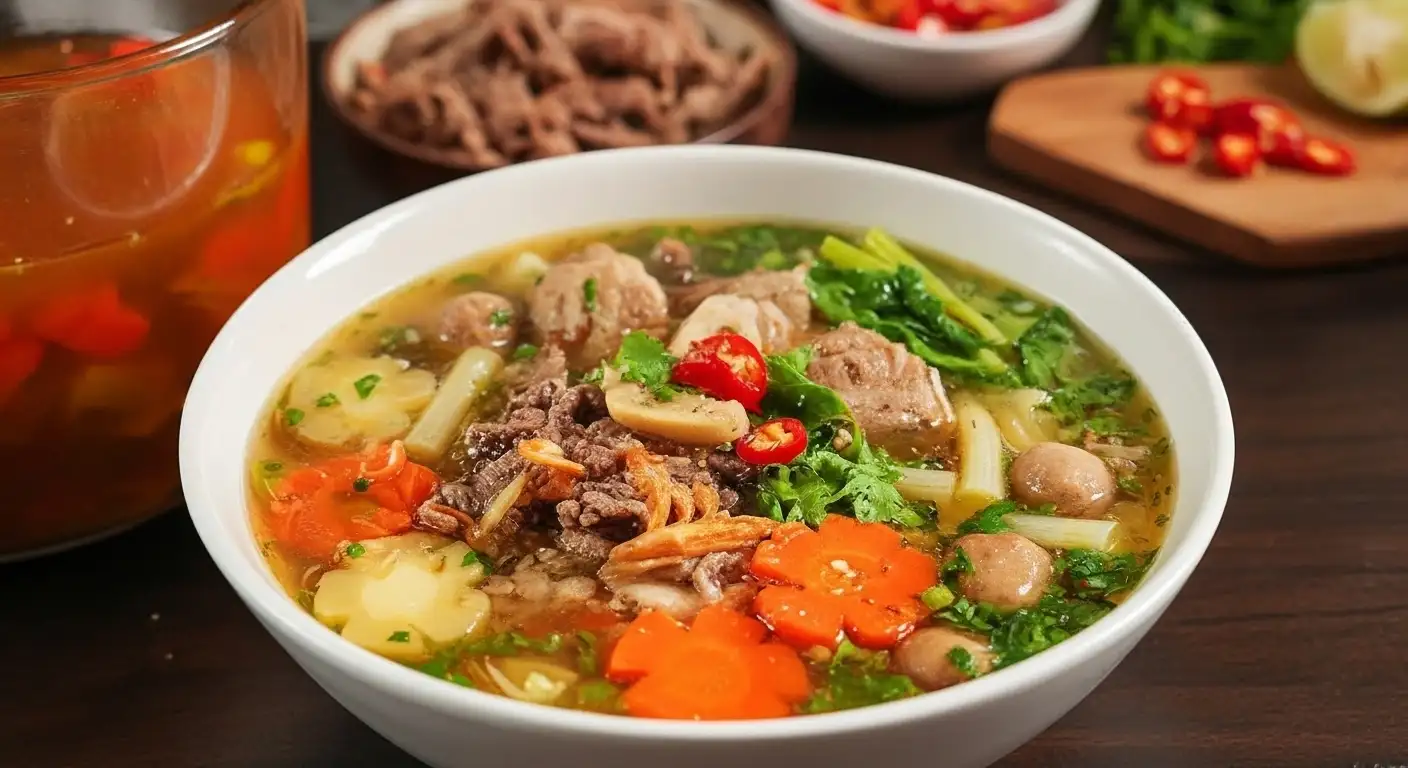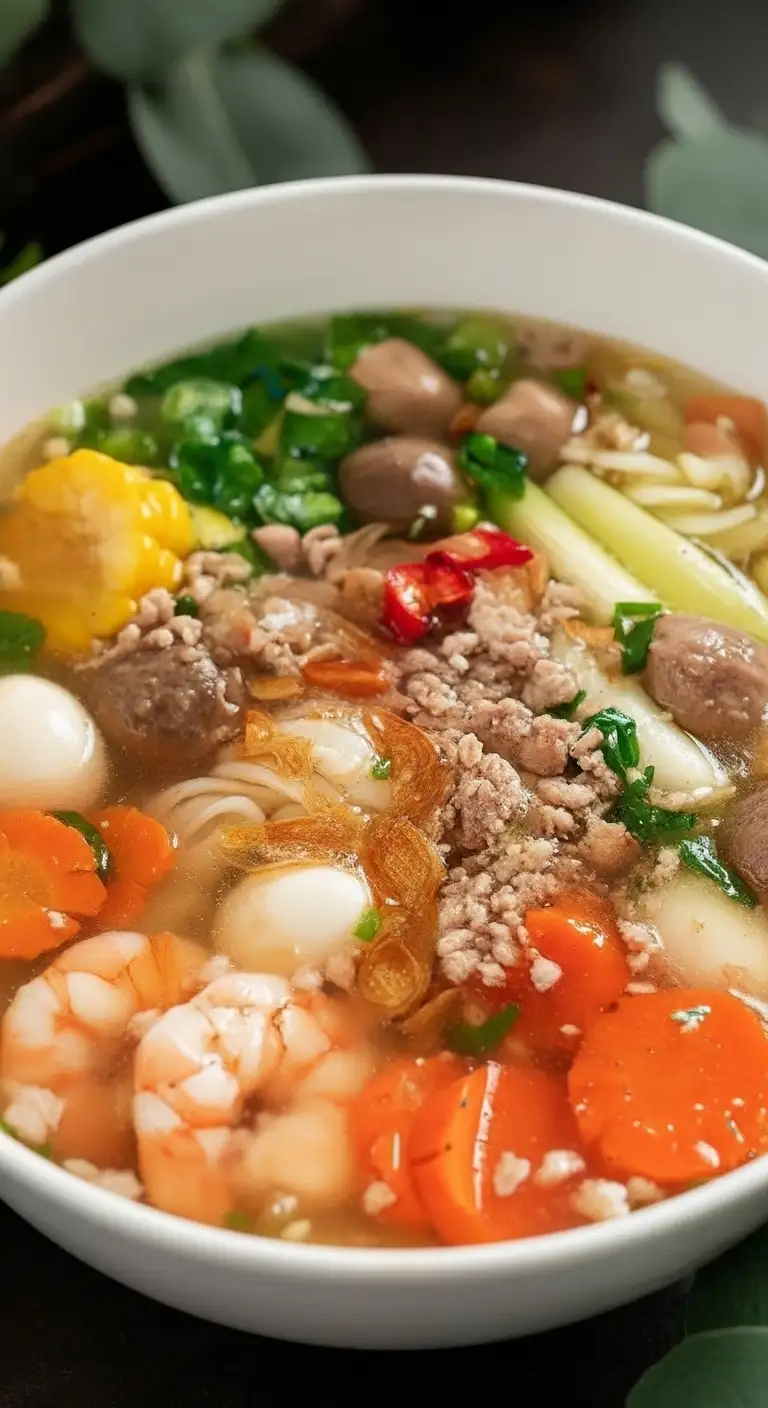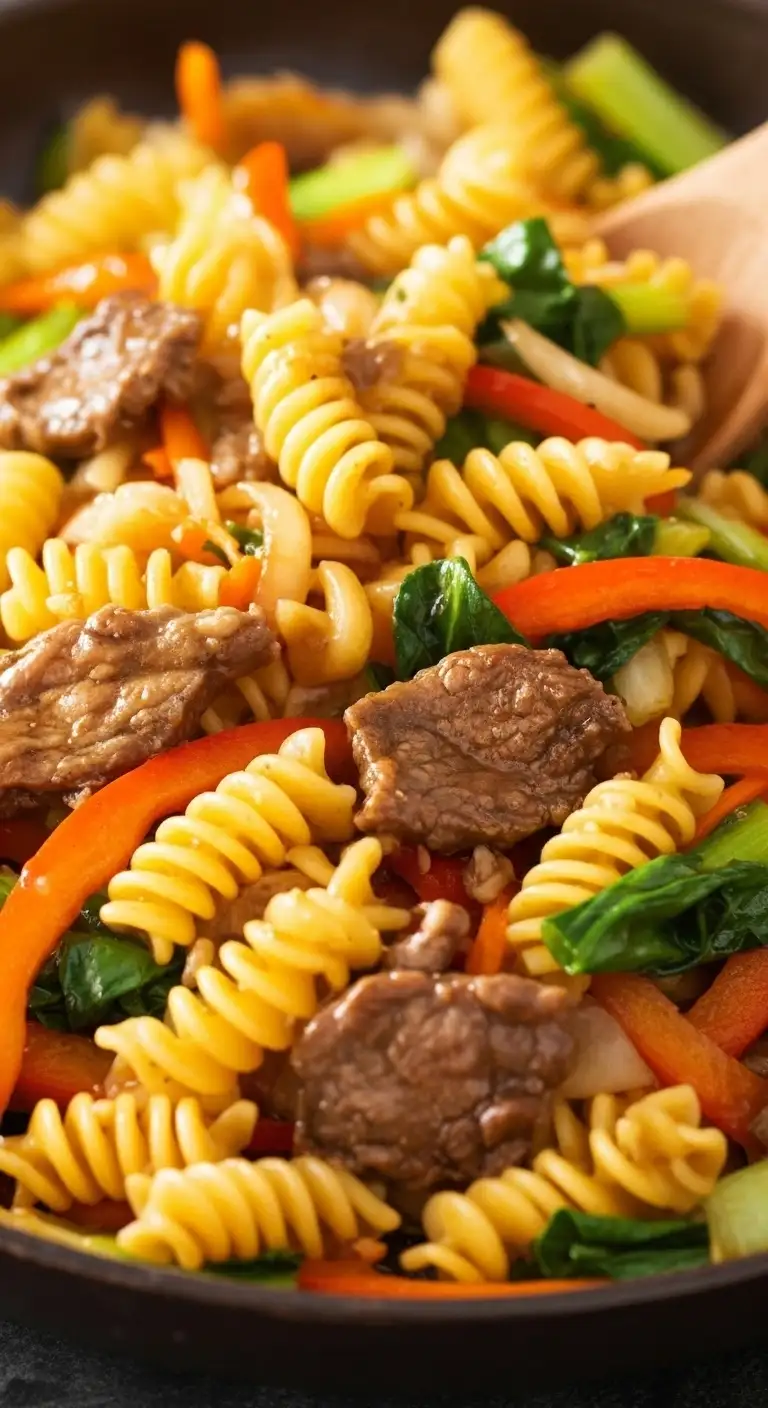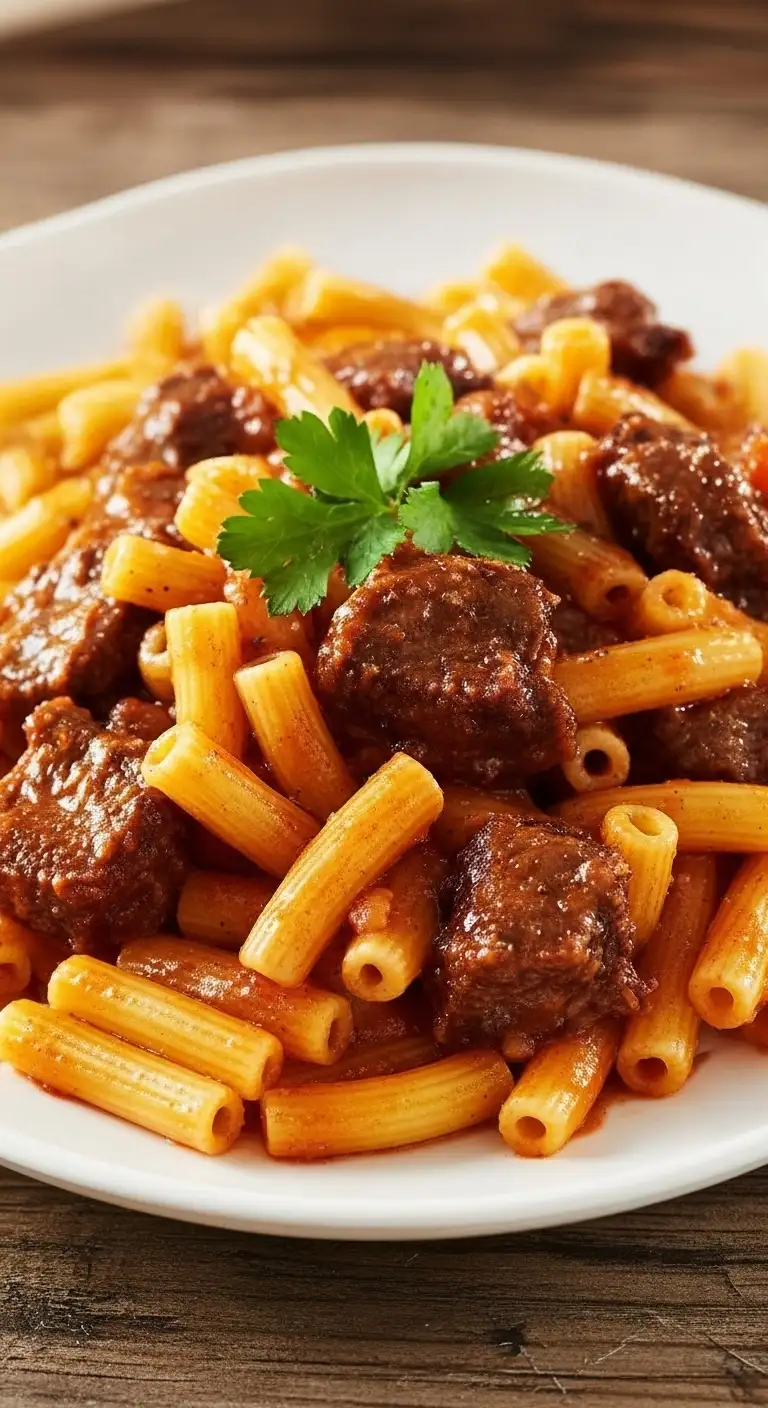The word Nui (pronounced like “Noo-ee”) in Vietnamese refers to small, short shapes of pasta, most commonly elbow macaroni. It is a fantastic example of how Vietnamese cuisine assimilated and adapted French colonial ingredients, creating unique and comforting dishes that are now beloved staples.
The name Nui is derived from the French word “nouille” (noodle), but in Vietnam, it exclusively refers to the small pasta shapes used in both stir-fries and soups.
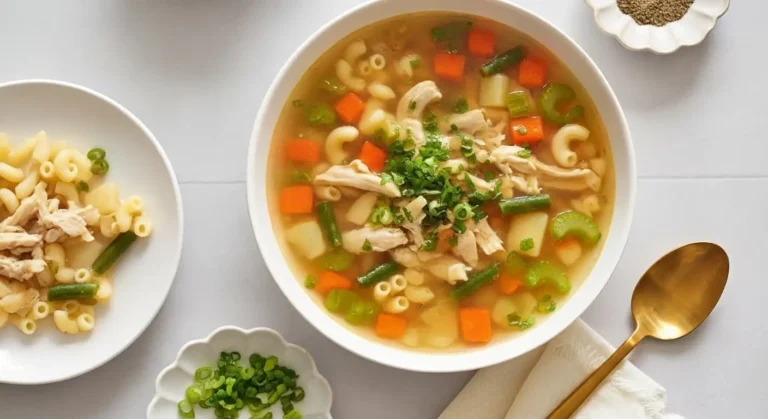
Nui: The Basics
What is it? Nui is a category of Vietnamese dishes centered around short pasta (macaroni, fusilli, shell, etc.). Unlike Italian pasta, the Nui used in Vietnam is often made with rice flour or a rice-flour blend, giving it a softer, bouncier, and highly sauce-absorbent texture.
Historical Influence: Nui was introduced during the French colonial period. Vietnamese cooks quickly embraced the new ingredient and integrated it with traditional Asian flavors—most notably fish sauce, soy sauce, and aromatic garlic and shallots.
Core Flavors: Nui dishes perfectly blend Western comfort food with Vietnamese umami. The taste profile is generally savory and garlicky, with hints of sweetness and richness from sauces like oyster sauce.
Main Types of Nui Dishes
Nui is primarily prepared in two styles: a savory stir-fry and a light soup.
A. Nui Xào (Stir-fried Pasta)
Nui Xào Bò (Stir-fried Pasta with Beef): This is the most famous Nui dish.
The Cook: Cooked Nui is stir-fried quickly in a hot wok with marinated, thinly sliced beef, onions, and sometimes tomatoes, bell peppers, or broccoli.
The Sauce: The dish is coated in a glossy, savory glaze made from oyster sauce, soy sauce, a touch of sugar, and often ketchup (or tomato paste) for color and tang.
Nui Xào Trứng (Stir-fried Pasta with Egg): A simple, quick version often served for breakfast or a light meal, where the Nui is stir-fried with beaten eggs, green onions, and simple seasoning.
Nui Xào Bò Lúc Lắc (Shaking Beef Stir-fry with Pasta): A highly popular variation where the pasta is stir-fried and served alongside cubes of Bò Lúc Lắc (Shaking Beef)—tender, marinated beef that is “shaken” in a hot pan.
B. Súp Nui (Pasta Soup)
Súp Nui Sườn (Macaroni Soup with Pork Ribs): This is a deeply comforting, light, and clear broth soup.
The Broth: The broth is subtly sweet and savory, typically made by simmering pork ribs or chicken bones with aromatics (onion, daikon) and seasoned lightly with salt, fish sauce, and a touch of sugar.
Contents: Cooked Nui is placed in a bowl and topped with pieces of tender rib meat, carrots, and sometimes quail eggs.
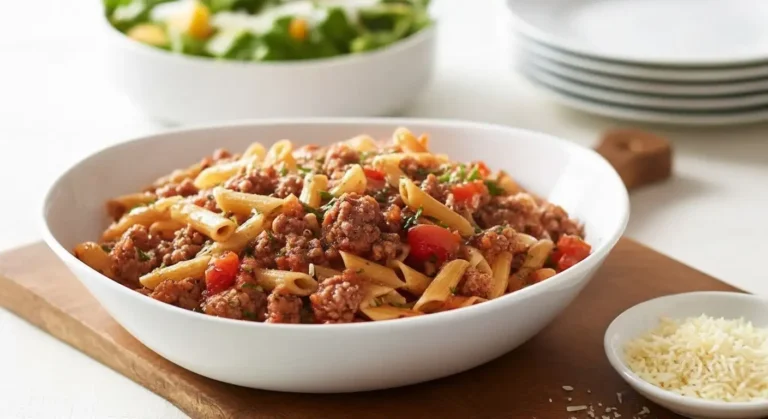
How to Eat Nui
The consumption method depends on whether you are eating the stir-fry or the soup:
For Nui Xào (Stir-fry):
- Eat as is: The dish is served hot, pre-mixed with the protein and vegetables.
- Condiments: Nui Xào is traditionally garnished with chopped green onions, cilantro, and a generous sprinkle of black pepper.
- Customize: The most common addition is a dash of Maggi Seasoning sauce (a savory soy-like sauce) and/or a spoonful of chili sauce (tương ớt) to introduce extra saltiness and heat.
For Súp Nui (Soup):
- Serving: The hot broth is ladled over the Nui and toppings in a bowl.
- Garnish: It is typically garnished with cilantro, fried shallots, and chopped green onions.
- Customize: Like Phở, the soup is meant to be seasoned at the table. Diners add a small squeeze of lime or lemon, a slice of chili, or an extra splash of fish sauce to achieve their preferred savory/sour balance.
Regional Differences
Nui is more of a common street food and family meal, especially popular in the more cosmopolitan South. However, regional culinary characteristics influence its preparation:
| Region | Regional Culinary Style | Nui Interpretation |
|---|---|---|
| Northern Vietnam (Hanoi) | Subtle, delicate, and balanced in flavor. Less heavy on sugar. | Milder, Simpler Broth. Súp Nui broth would be lighter and less fatty, favoring the natural sweetness of the bone broth. Nui Xào would be less reliant on sweet sauces (like ketchup) and focus more on the savory soy sauce/oyster sauce blend. |
| Central Vietnam (Hue/Da Nang) | Spicy, rich, and bold flavors. | Spicier Preparation. Central-style Nui might incorporate more chili or black pepper into the stir-fry or soup seasoning. Nui Xào could use a more robust, sometimes darker seasoning. |
| Southern Vietnam (Ho Chi Minh City) | Sweeter, oilier, and diverse; heavily influenced by Chinese and other cuisines. | Most Popular Here. Nui Xào Bò is a Southern street food staple. The stir-fry is often slightly sweeter (higher sugar/ketchup content) and frequently topped with fried shallots (hành phi) and a drizzle of scallion oil (mỡ hành) for extra richness—a classic Southern trait. |
